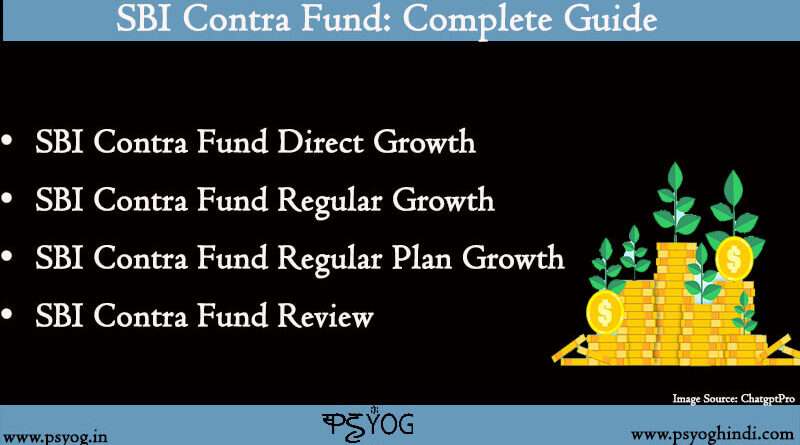SBI Contra Fund: Direct Growth, Regular Growth, Regular Plan Growth, Review
Just like other people, if you’ve been exploring mutual fund options that don’t just chase the trend, the SBI Contra Fund might have caught your eye. It does not matter, whether you’re considering the SBI Contra Fund Direct Growth, SBI Contra Fund Regular Growth, or the SBI Contra Fund Regular Plan Growth, it’s necessary to know how each variant works and what sets them apart. In this detailed SBI Contra Fund review, we’ll break down everything you need to know—without the jargon—so you can decide which version fits your investment approach.
SBI Contra Fund Direct Growth
The SBI Contra Fund Direct Growth plan is for those who like to manage things on their own. By investing directly through the fund’s website or a direct platform, you skip the middleman and avoid distributor commissions. That might not sound like a big deal at first, but over time, the cost savings can add up and improve your overall returns.
This plan is ideal for investors who are comfortable doing a bit of research, setting up SIPs themselves, and checking in on their investments once in a while. It doesn’t pay out dividends—instead, it reinvests profits back into the fund, allowing your money to grow quietly in the background. It’s a long-term play, and if you’re not someone who panics during market dips, it can work really well. (Read: How is the HDFC defence fund?)
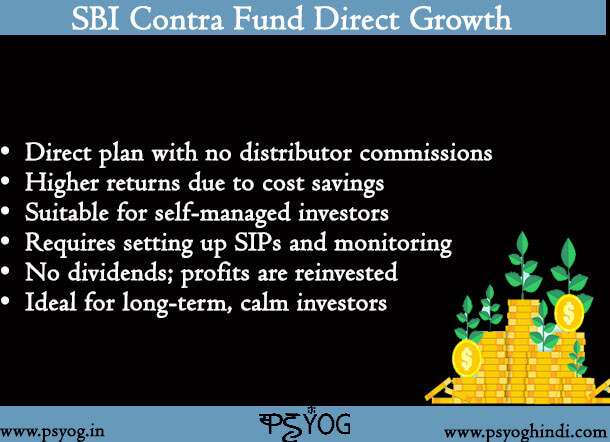
SBI Contra Fund Regular Growth
Now, the SBI Contra Fund Regular Growth option includes the assistance of a financial advisor or distributor. That means you’re not going it alone—you get someone to help guide your investment decisions. This comes with a slightly higher fee (in the form of commissions), but for many investors, especially those new to mutual funds, that extra support is worth it.
Like the direct growth version, this plan also reinvests the returns rather than distributing them. So, your investment keeps building over time. If you prefer having someone walk you through the process, this option gives you that hand-holding while still allowing your money to grow in a disciplined way.
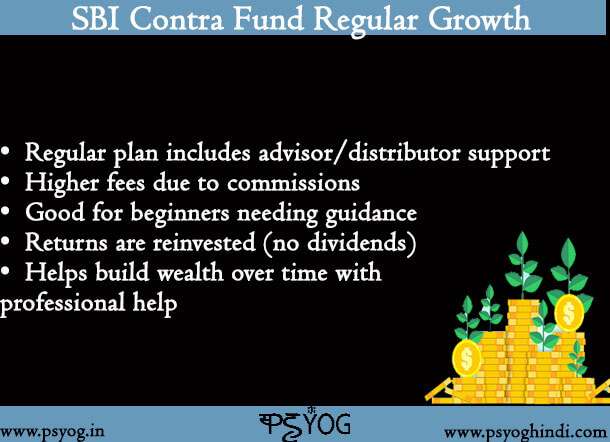
SBI Contra Fund Regular Plan Growth
The SBI Contra Fund Regular Plan Growth is essentially the same as the regular growth plan, just labeled a bit differently depending on where you’re looking. The key thing here is the term “growth”—it means your returns are reinvested, not paid out. This differs from dividend plans, which might seem appealing if you like getting regular payouts, but can limit long-term growth.
This plan works well for people who like having a financial advisor involved, especially those investing through traditional channels like banks or agents. If you prefer simplicity and don’t want to deal with the nitty-gritty of mutual fund platforms, this variant fits the bill. (Read: Everything about Parag Parikh flexi cap fund)
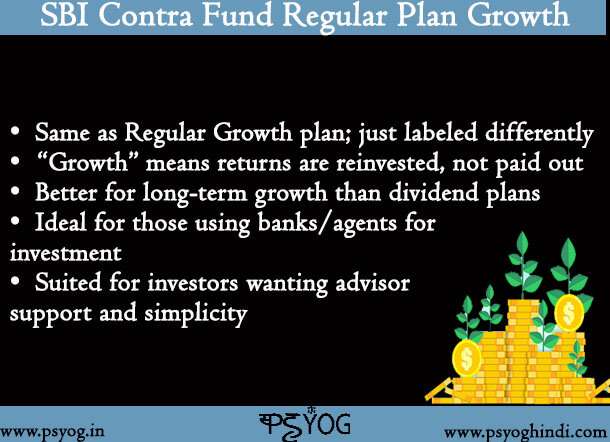
SBI Contra Fund Review
Let’s talk about what really makes this fund stand out. This SBI Contra Fund review isn’t just about performance numbers—though they’ve been solid over the years. The real story lies in the fund’s strategy. It follows a “contrarian” approach, meaning it invests in stocks or sectors that are currently unpopular but have potential to bounce back.
This isn’t a fund that jumps into hot trends. Instead, it does the opposite—buying low when others are avoiding those sectors. That might sound risky, but historically, this strategy has paid off for patient investors. It’s not a get-rich-quick fund. You’ll need to give it time—ideally five years or more—to really see the results.
The fund is managed with a disciplined hand. Its turnover ratio is low, which means it doesn’t constantly shuffle stocks in and out. That helps reduce unnecessary costs and taxes. What’s more, the fund manager’s decisions are backed by thorough research and a focus on long-term value.
It’s not for everyone, though. If you’re looking for short-term gains or panic when markets drop, you might find the approach uncomfortable. But if you understand cycles and are willing to wait for undervalued stocks to perform, this fund can deliver impressive results over time.
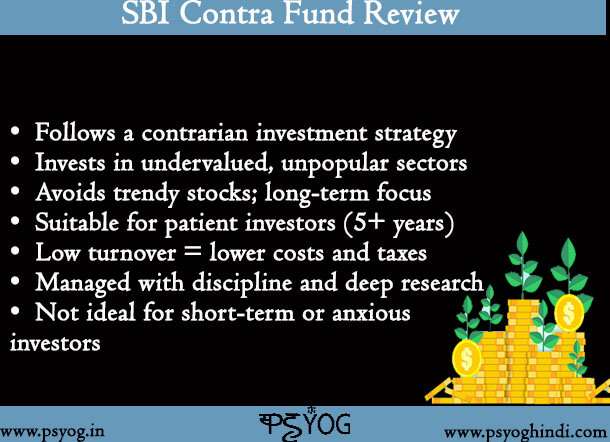
Conclusion
So, should you invest in it? It depends on your comfort with taking a path less traveled. If you’re cost-conscious and prefer managing things yourself, the SBI Contra Fund Direct Growth option is a smart choice. If you’d rather have an advisor guide you, then the SBI Contra Fund Regular Growth or SBI Contra Fund Regular Plan Growth may be better suited for you. (Read: How can shares make you rich?)
This SBI Contra Fund review highlights how each version caters to different investor mindsets. The core fund remains the same—contrarian in style, long-term in focus—but your experience with it will depend on which plan you pick.
Whether you go direct or through an advisor, this fund is for those who can be patient, stay the course, and trust in a strategy that looks beyond short-term market noise. If that sounds like your kind of investing, it’s definitely worth considering.
FAQs
Is SBI Contra Fund a good investment?
Yes, for long-term investors who understand the contrarian strategy, SBI Contra Fund can be a strong investment. It has historically rewarded those who are patient and willing to ride out market ups and downs.
Can I withdraw money from the SBI Contra Fund?
Yes, you can redeem your investment anytime. Just keep in mind that if you withdraw within one year, there’s usually a 1% exit load. It’s best to stay invested for at least 3–5 years to truly benefit from the fund’s approach.
What is the return of SBI Contra Fund?
Returns vary with market cycles, but over the past five years, the fund has delivered an average annual return of around 18–20%. That said, past performance doesn’t guarantee future results, so a long-term mindset is key.

